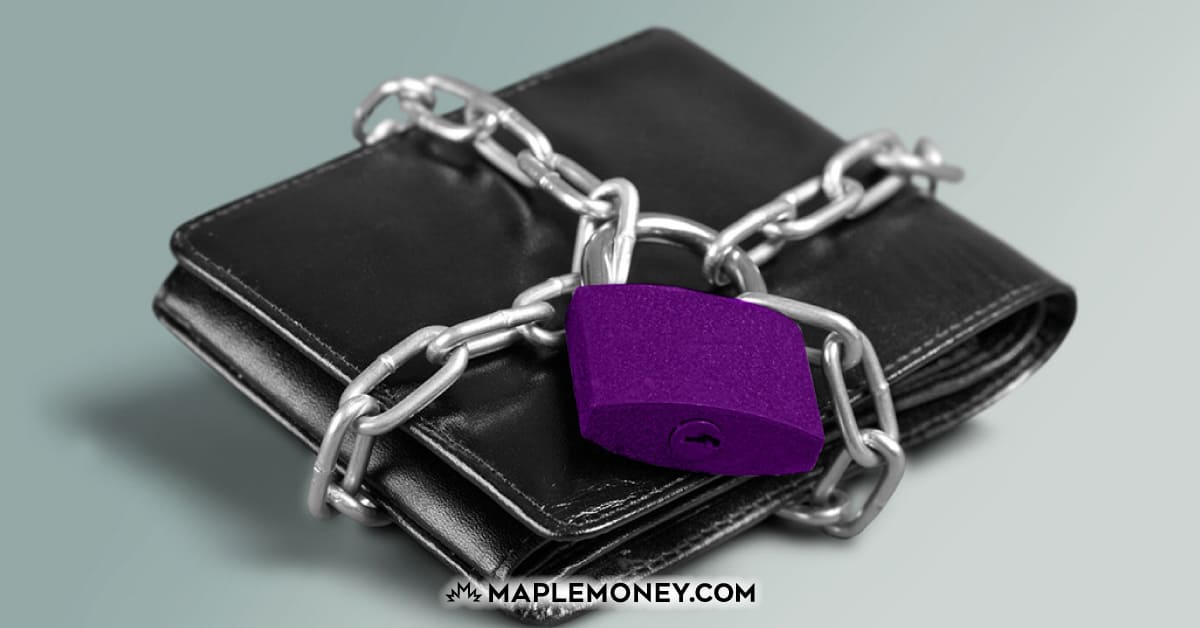What Is CDIC and How Does It Work?

When you see the purple decal – this is what it means for your savings
For generations, Canadians have been able to place their trust in their financial institutions. In fact, during the global economic crisis of 2008, Canadian banks weathered the storm better than most and were the envy of financial systems around the world. One of the reasons for this is our highly developed banking industry, which is monitored closely by federal regulators and governed by the laws included in The Bank Act.
Introducing CDIC
Canada Deposit Insurance Corporation or CDIC is instrumental in protecting the Canadian financial system. Created by an Act of Parliament in 1967, CDIC is a federal Crown corporation that promotes and contributes to the stability of the Canadian financial system by providing deposit insurance against the loss of part or all of deposits at CDIC’s member institutions in the event of a member institution failure. CDIC is not a bank or private insurance company. It is funded with premiums paid by their member institutions, and while it’s a Crown corporation, it’s not publicly funded.
How Does CDIC Work?
CDIC provides Canadians with deposit protection up to $100,000, separately, across seven coverage categories. In other words, depending on the types of accounts you hold, you could be covered well in excess of $100,000. I’ll break this down in more detail a bit later, but to use a basic example, let’s say you had the following: $80,000 held in a savings account in your name, $50,000 invested in a 3-year GIC inside your RRSP, and an additional $40,000 in a joint chequing account with your spouse, your total holdings of $170,000 across the three accounts would be fully protected by CDIC.
What’s Included in CDIC Coverage
Not all financial products are eligible for CDIC coverage. For example, mutual funds, stocks and bonds are not protected by CDIC. For your reference, here’s a list of what is and isn’t covered by CDIC at its member institutions:
What is covered
- Chequing and savings accounts
- GICs and term deposits with a lock-in term of up to 5 years (Starting April 30th, 2020 coverage will be extended to deposits with terms greater than 5 years)
- Bank drafts and money orders
- Eligible deposits in trust accounts
- Funds held in a dedicated mortgage property tax account (Starting April 30th, 2021 separate coverage for deposits in mortgage tax accounts will be removed and these deposits will be combined with eligible deposits in other categories)
What isn’t covered
- Mutual funds
- Stocks and bonds
- Accounts in a foreign currency (Starting April 30th, 2020 deposits held in foreign currencies at CDIC member institutions will be protected)
- Cryptocurrencies
CDIC Coverage Categories
CDIC insures eligible deposits separately across seven different coverage categories. Here is a breakdown of each one:
- Deposit account held in a single name
- Non-registered deposit account in more than one name (joint account)
- Eligible Registered Retirement Savings Plan (RRSP) account
- Eligible Retirement Income Fund (RRIF) account
- Eligible Tax-Free Savings Account (TFSA)
- Deposits held in a trust account
- Deposits in a dedicated mortgage property tax account
CDIC Coverage Scenarios
I’ve put together the following scenarios, to illustrate how CDIC coverage works. To figure out your own coverage, be sure to check out the CDICs free deposit insurance calculator.
CDIC coverage: Scenario #1
John has a mortgage and a chequing account at the Toronto Dominion Bank. At the moment, he has a large balance in the chequing, of $45,000. Because TD collects the property taxes for his mortgage, the property tax account has a current balance of $4500. In addition to his TD business, John has both a TFSA and an RRSP account with the Royal Bank. The funds in his TFSA are invested in a 3-year GIC, $20,000 in total. In his RRSP, he has a current balance of $120,000, which is invested in a balanced mutual fund portfolio.
Using this information, let’s calculate John’s CDIC coverage:
Protected by CDIC: $69,500
$45,000 TD Chequing
$4,500 TD mortgage tax account
$20,000 Royal Bank TFSA (3-Year GIC)
Unprotected by CDIC: $120,000
$120,000 Royal Bank Mutual Fund portfolio
CDIC Coverage: Scenario #2
Simran has an online savings account with Tangerine Bank. The current balance is $20,000, and she’s planning to use the funds to purchase a new car in the near future. The account is in her name alone. Simran’s chequing account is with Scotiabank and is joint with her husband, Amrik. The two maintain a balance of $5000 in that account.
In addition, Simran holds a TFSA with Scotia iTrade, in an online stock trading account. Her $45,000 balance is invested exclusively in exchange traded funds (ETFs). Lastly, Simran’s father established a family trust in the past year and named her and her brother beneficiaries of the trust. The funds are held in savings, to the tune of $50,000 for each beneficiary.
Using this information, let’s calculate Simran’s CDIC coverage:
Protected by CDIC: $75,000
$20,000 Tangerine Bank savings
$5,000 Scotiabank joint chequing account
$50,000 family trust savings (Home Trust Company)
Unprotected by CDIC: $45,000
$45,000 TFSA with Scotia iTrade (invested in ETFs)
What Happens When a Bank Fails?
It might surprise you to know that since its inception in 1967, CDIC has handled 43 bank failures. So, while Canada’s banking system is very secure, (the last failure was in 1996, when Calgary-based institution Security Home Mortgage Corporation went out of business), it is possible for a financial institution to go under. If a similar situation were to arise in the future, CDIC is standing by, ready to protect depositors.
Of course, it’s important to remember that not all deposits are CDIC protected, nor are all financial institutions included. In case you’re wondering if your bank offers CDIC coverage, you can always check the CDICs list of member institutions or look for the purple logo at your financial institution or in your banking app.
Final Thoughts on CDIC Coverage
While you never want to have to rely on CDIC, it’s comforting to know that the protection is there, should the unlikely ever occur. The nice thing is that CDIC coverage is automatic; there are no premiums to pay, and no application forms to fill out. If you haven’t before considered what CDIC protection you may or may not have in place, I highly recommend that you visit the CDIC website to fill out their deposit insurance calculator. This will give you peace of mind knowing that your money is secure.


Comments
These CDIC writeups on the web never seem to answer one specific question I have. We always read about “eligible deposits at financial institutions” and that GICs are also covered. So I wonder what you will say about the following scenario?
Suppose I hold GICs in an account at a discount broker. The broker is presumably not CDIC insured since it deals mainly with trading stocks and ETFs. However, suppose one of my holdings in the brokerage account is a $100k CIBC GIC. Another is a $100k BMO GIC, another a $100k TD GIC, etc.
(Q1) Am I covered up to $100k if, say, CIBC becomes insolvent? Or is the answer no, because the deposit is at an entirely different financial institution (specifically, the deposit is in the brokerage, which is not CIBC)?
(Q2) Am I covered up to $200k if, say, both CIBC and BMO become insolvent simultaneously?
In other words, the heart of the question is: Does the *account* where GICs are held affect CDIC, or does only the *issuer of the GIC* matter? You’d think this information would be ultra-clear on the CDIC website, or on the hundreds of online writeups. Alas, it is not. At least not to me. The CDIC’s online calculator cannot make the distinction between the issuer of a GIC and the institution at which it is held. (Seems crazy to me. Who walks into a bank to buy a GIC when your online discount broker can do it at the press of a button?)
Thanks,
Paul